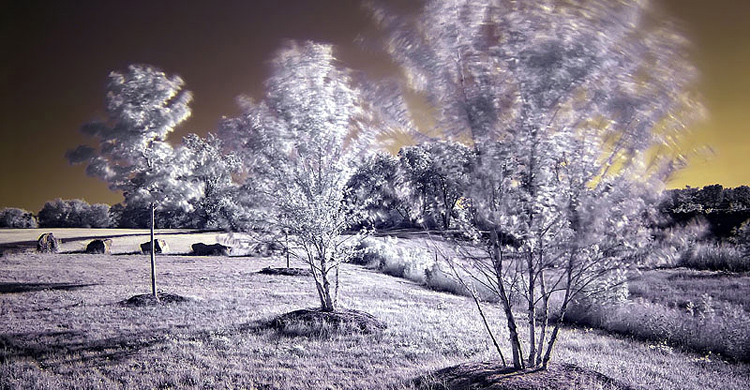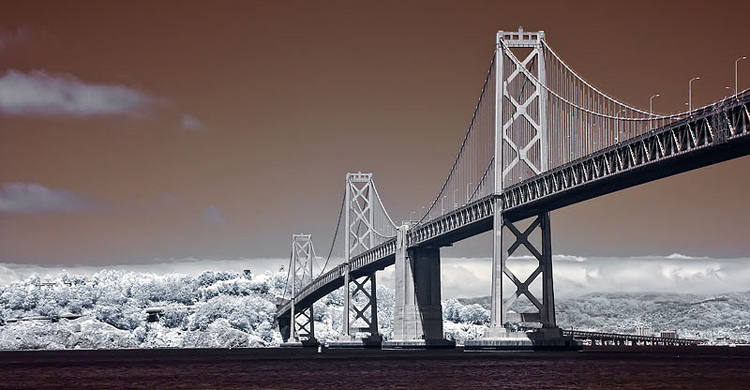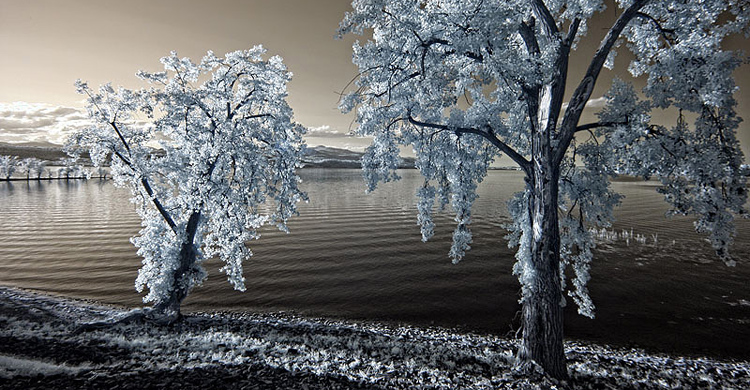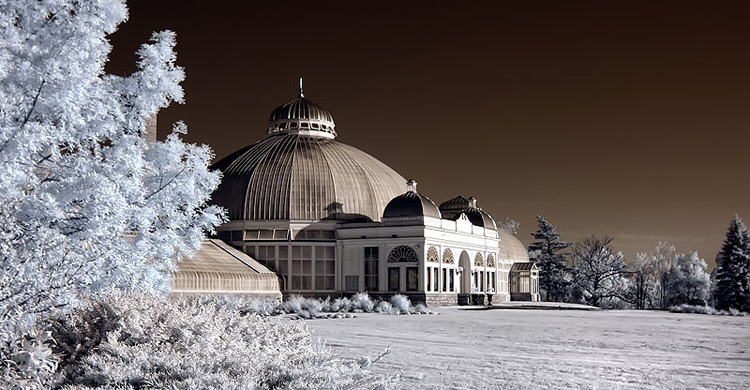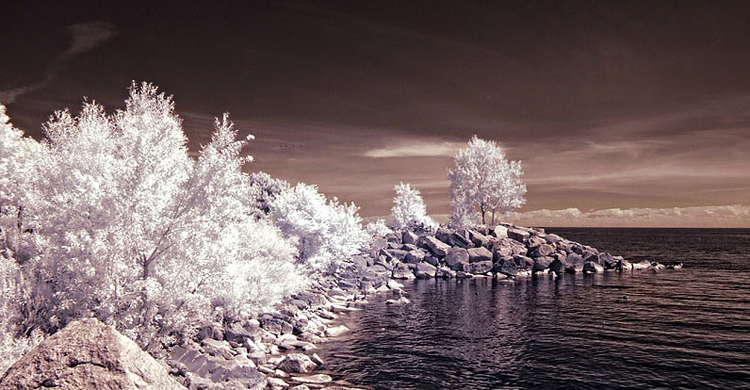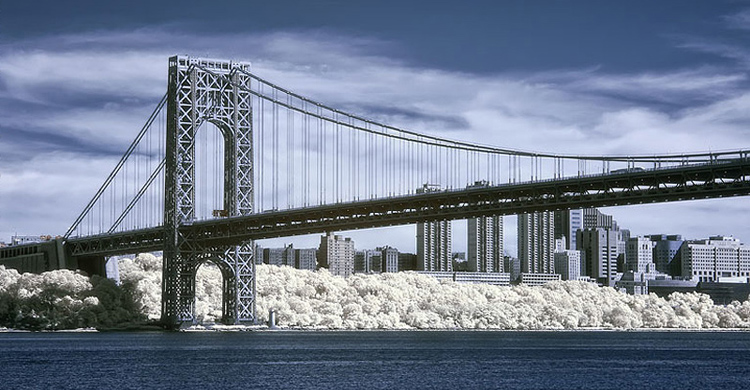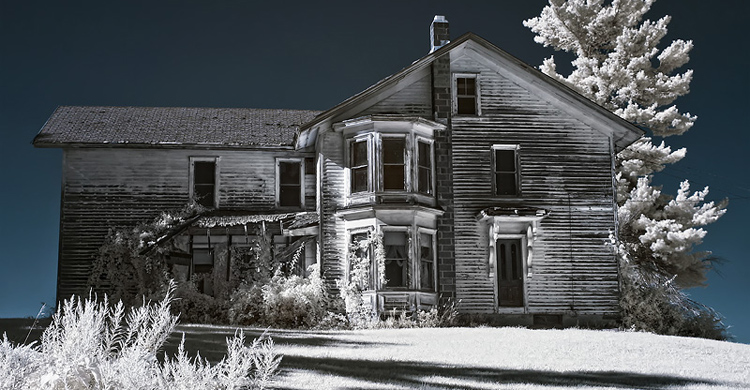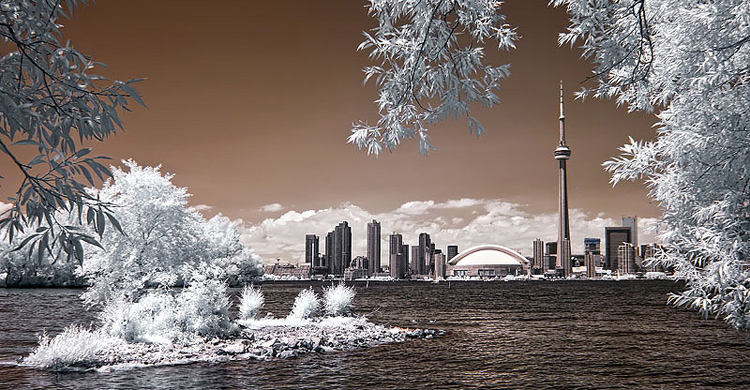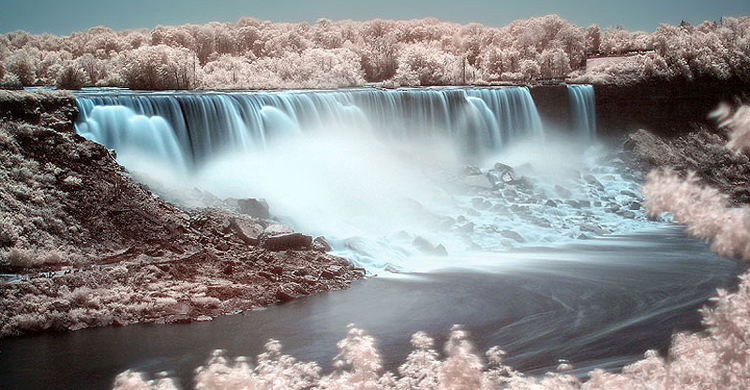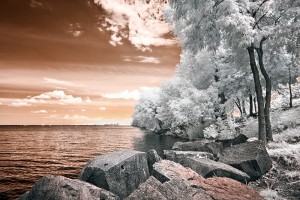

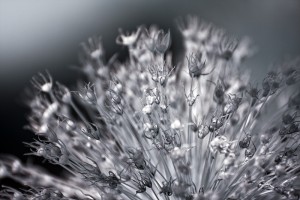
Infrared Photography
In digital infrared photography, the part of the light spectrum used is referred to as “near-infrared” to distinguish it from far-infrared, which is what is used in thermal infrared imaging. Wavelengths used for infrared photography range roughly from 560nm (nanometers) to 900nm. Usually, a special infrared filter in front of the lens is used; this lets infrared (IR) light pass through to the camera’s sensor, but blocks all or most of the visible light spectrum. Camera sensors can also be converted to capture only infrared light. Most all of my infrared photos are created by capturing light in the spectrum between 650nm to 720nm.
Using an infrared-sensitive digital camera sensor in combination with IR filters, very interesting in-camera color effects can be obtained. False-color or black-and-white images with a dreamlike or surreal appearance are the main characteristics of digital infrared photographs. This appearance is mainly caused by foliage (such as green tree leaves and grass) strongly reflecting infrared light the same way visible light is reflected from snow.
The other attributes of infrared photographs include very dark skies and penetration of atmospheric haze. The dark skies, in turn, result in less infrared light in shadows and dark reflections of those skies from water, and clouds will be more pronounced. Infrared wavelengths also penetrate a few millimeters into human skin and will give a milky look to portraits, making eyes often look black and the veins under the skin more visible.
I am a featured infrared photographer on LifePixel.
Please see more infrared photos here in my Infrared Featured Gallery.

